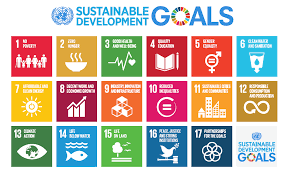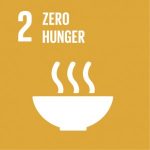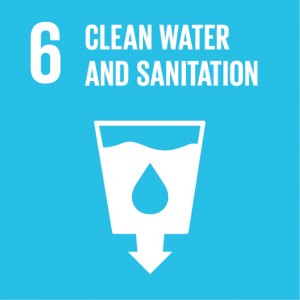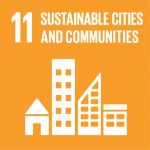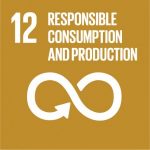PHILOSOPHY
“THE NATION THAT DESTROYS ITS SOILS, DESTROYS ITSELF” Franklin Roosevelt (1937)
Many people think about things such as an active exercise program, wise food choices, good medical care, and proper sanitation when they consider their health, but few probably think about soils. The truth is soils form an integral link in the holistic view of human health, and some have recognized there are connections between soil and human health going back thousands of years.[1]
As far back as circa 1400 BC the Bible depicts Moses as understanding that fertile soil was essential to the well-being of his people. In 400 BC the Greek philosopher Hippocrates provided a list of things that should be considered in a proper medical evaluation, including the properties of the local ground. [2]
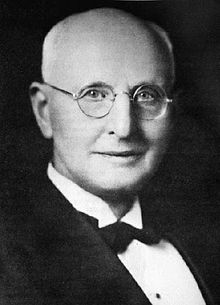 Weston Andrew Valleau Price (September 6, 1870 – January 23, 1948) was one of the first scientists known primarily for his theories on the relationship between nutrition and physical health. In 1939, he published book Nutrition and Physical Degeneration, detailing his global travels studying the diets and nutrition of various cultures. The research materials include some 15,000 photographs, 4,000 slides, and many filmstrips. Dr. Price’s research demonstrated that humans achieve perfect physical form and perfect health generation after generation only when they consume nutrient-dense whole foods.
Weston Andrew Valleau Price (September 6, 1870 – January 23, 1948) was one of the first scientists known primarily for his theories on the relationship between nutrition and physical health. In 1939, he published book Nutrition and Physical Degeneration, detailing his global travels studying the diets and nutrition of various cultures. The research materials include some 15,000 photographs, 4,000 slides, and many filmstrips. Dr. Price’s research demonstrated that humans achieve perfect physical form and perfect health generation after generation only when they consume nutrient-dense whole foods.
In 1950, a review in the journal The Laryngoscope said that “Dr. Price might well be called “The Charles Darwin of Nutrition” while describing Price’s documentation of his global travel and research in a book. The book is available for free PDF download. [3]
The World Health Organization defines health as a state of complete physical, mental and social well-being and not merely the absence of disease or infirmity. The health of the population is reflective of the health of the food system. The foundation of a sustainable community-based food system is built on healthy and diverse natural resources. Science proves that healthy soil grows healthy food. Science also proves that eating healthy food nourishes healthy people and healthy people form healthy communities. Therefore, when the soil is unhealthy it becomes the source of disease in plants, animals and people.
Soils affect almost everything in our lives: the food we eat, the vegetation we walk on, the medicines we take, the buildings we live in, the clothes we wear, the water we drink and even the weather! Soils really do enable life on Earth and they are central to sustainable development. [4]
Studies report that approximately 33% of our soils are facing moderate to severe degradation. The current rate of soil degradation threatens the capacity to meet the needs of future generations. [5]
Micronutrient malnutrition is a major factor affecting the health and wellbeing of people throughout the world. [6]
Micronutrients are nutrients required by organisms throughout life in small quantities to orchestrate a range of physiological functions. [7]
World Health Organization (WHO) and the Food and Agriculture Organization of the United Nations (FAO) announced that around half of the global population currently suffers from some form of malnutrition. Malnutrition encompasses not only undernutrition but also micronutrient deficiencies and the growing problem of obesity. Hidden hunger occurs when the quality of food people eat does not meet their nutrient requirements, so the food is deficient in micronutrients. 2 billion people suffer from micronutrient deficiencies.
The best way to get rquired micronutrients is healthy diet. The healthy diet fact sheet is published by WHO. [8]
The global problem is that despite even the best efforts to eat a healthy balanced diet, most of our food sources no longer contain all necessary micronutrients, fulvic, humic and bio-active organic acids, minerals and other phytonutrients our bodies need to stay healthy because of soil degradation due to intensive industrial agriculture practics. Degraded soils cause poor nutrition value plants and poor nutrition value food cause human physical and mental degeneration. [9]
Mineral fertilizers alone can not solve the question. Soil organic matter (SOM) and humates consisting of biologically active fulvic, humic, amino and other organic acids are crucial to life on earth because they provide a biochemical bridge between mineral and living plant matter. Humic and fulvic acid are powerful chelaters and help to increase nutrient absorption. Humates have been used in agriculture for many years, possibly thousands of years.
Fulvic acids are nature created micronutrient transformation and transportation system. It is naturally produced in healthy soils by beneficial microbes as organic material is broken down. Fulvic acids starts its journey in the soil that will take it and the micronutrients and charges it, carries throughout the biosphere to support life everywhere it goes – to plants, to animals, to human beings. In the soil, the first task of fulvic acids is to transform inorganic mineral rocks and mineral metals into their activated, water-soluble, “cell-ready” micronutrient form of fulvic minerals – the only micronutrient form plants can use and the only form we can use too. Fulvic acids transport these micronutrients out of the soil into the plant and delivers them to the plant cells where they are needed in just about every metabolic process. [10]
Only in the last decade or so have we even understood how humates work. We now talk of an auxin-like response, not really knowing what causes it. It was never realized how effective humate was at very low application rates and how much soil change it can effect in a short time. Stimulation of biomass production at the bottom of the food chain is a part of the benefit of humates. Release of essential minerals from the soil for plant uptake is part of this process thus eliminating micronutrients dficiency in all food chain.
Not all humates are equal quality. Various forms of humates exist including those produced by composting, industrial by-products and those created during ancient geological events. Leonardite refers to slack (oxidized) lignite, typically found in North Dakota, Wyoming and other locations around the world (the term was first coined by Dr. Leonard at the University of ND). This exact material has a good amount of humic, but is lower in fulvic and other bioactive organic acids and is not high in biological activity. However, now this term has spread and many people refer to humates in general as Leonardite but Leonardite is low in biological activity.
The best humate is one that is high in biological activity, fulvic/humic/bio-active organic acids and also high in oxygen in the phenolic and quinoid groups. Humic acids function best in the low weight fraction (fulvic) on the cellular level. Molecular weight is very important with the high oxygen types usually falling into the low weight (smaller sized molecules) category and thus more biologically active since only low weight molecules are utilized by beneficial organisims, enter cell membranes more efficiently, create greater permeability for the flow of nutrition into the cell and adsorption of excess heavy metals for removal from the cell. In agriculture, stimulation of each cell produces more energy from the plant and higher yield. The process starts with soil microbes, then plant root cells and eventually the entire plant. Cellular stimulation at all levels is how it works. Also it is the best way for micronutrient deficiency elimination.
Micronutrient deficiency elimination is as cost effective as the best public health interventions and mineral fertilizers fortification with micronutrients is the most cost-effective strategy. [11]
UNDERSTANDING THE 2030 AGENDA FOR SUSTAINABLE DEVELOPMENT
On 25 September 2015 the 193 Member States of the United Nations adopted the Sustainable Development Goals (SDGs), a set of 17 aspirational objectives over the next 15 years (2016- 2030).
Food and Agriculture are the Key to Achieving the 2030 Agenda for Sustainable Development.
